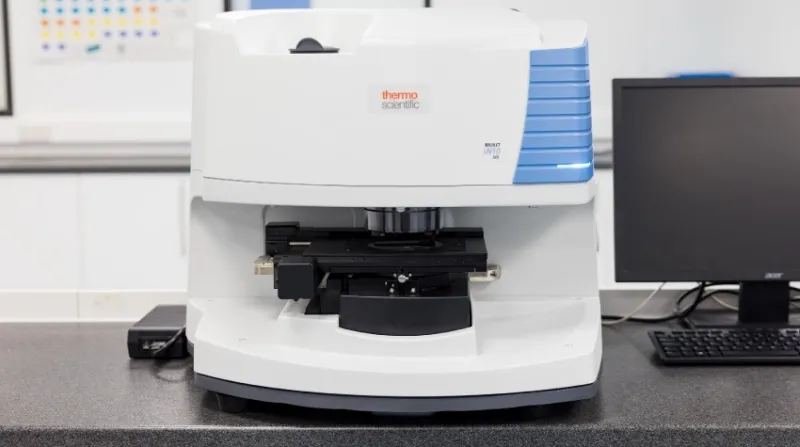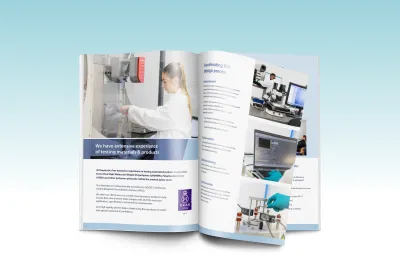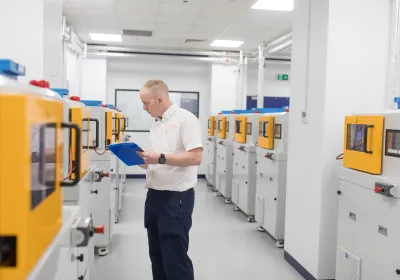
Understanding the Oxidation Index Test for UHMWPE
At Orthoplastics, we specialise in high-performance polymers for the medical device sector, with Ultra High Molecular Weight Polyethylene (UHMWPE) being one of the most widely used. To make sure this material delivers reliable, long-term performance, we use a range of advanced testing methods in our ISO/IEC 17025 accredited laboratory. One of the most important is the Oxidation Index test.
Shining a light on material stability
The Oxidation Index test measures the level of oxidation present in UHMWPE, following ASTM F2102 and ISO 5834-4 standards. Oxidation can reduce mechanical strength, shorten lifespan and affect wear resistance in medical implants.
By quantifying it, manufacturers gain essential insight into how stable the polymer is, how processing or storage may have affected it and whether it meets international requirements. It also helps evaluate the effect of antioxidants such as vitamin E.
Infrared spectroscopy is used to detect carbonyl absorptions centred near 1720 cm-1. These absorptions are directly linked to the amount of chemically bound oxygen in the polymer. Other oxygen containing groups are not measured, which keeps the results highly specific to oxidation.
Precision tools for reliable results
To carry out the test, our team uses an FTIR NICOLET iN10 spectrometer supported by OMNIC Picta software. Samples are prepared as thin films with a nominal thickness of 200 microns, with a small margin for variation.
By controlling sample size and test conditions, the process delivers consistent, repeatable results. This level of precision is vital for regulatory submissions, validation work and ongoing quality control.
Supporting product development at every stage
Because oxidation plays such a big role in the long-term performance of UHMWPE, the test is often built into the early stages of product development. Confirming material suitability from the outset reduces the risk of delays and gives manufacturers confidence before committing to full-scale production.
The test also provides valuable insight into how factors such as sterilisation techniques, shelf life, storage conditions and irradiation influence oxidation. Coupled with accelerated ageing to ASTM F2003, it can assess the long-term oxidative stability of your materials. This helps developers select the most stable UHMWPE grades for reliable long-term use in implants.
Part of a complete testing service
Oxidation Index testing is one component of the broader testing and analysis service offered by Orthoplastics. Other capabilities include:
- Failure mode analysis using physical, mechanical and chemical techniques
- Mechanical testing for short-term and long-term performance
- Chemical analysis to identify polymers and detect contaminants
- Accelerated ageing studies
- Packaging analysis
- Thermal analysis, such as glass transition, melting point and crystallinity
Together, these services provide a comprehensive view of how polymers perform in real-world conditions. They support faster development, stronger decision-making and products that can be trusted to perform.
Get in touch
Orthoplastics is committed to supporting customers with data, expertise and insight that move projects from concept to high-performing medical products. The Oxidation Index test is a crucial part of this process, providing clarity and confidence in the performance of UHMWPE.
To learn more about our laboratory services, download our brochure or speak to one of our team today.


